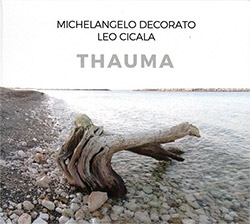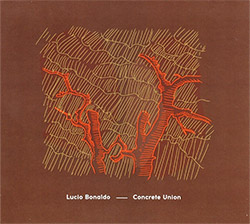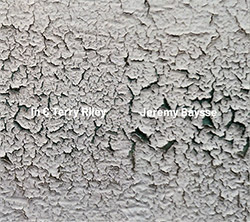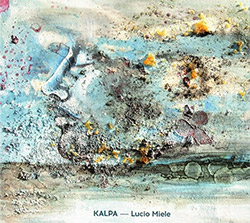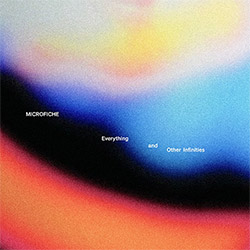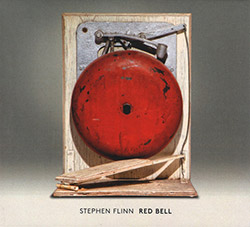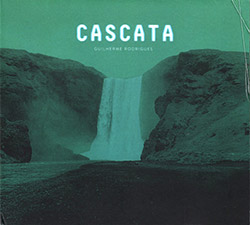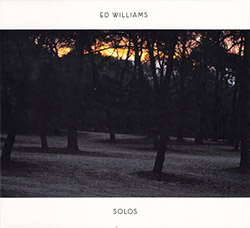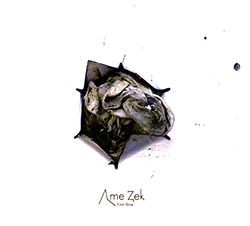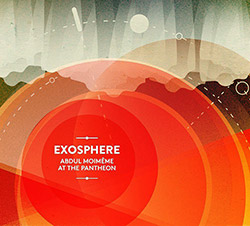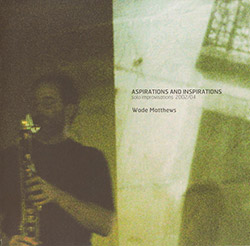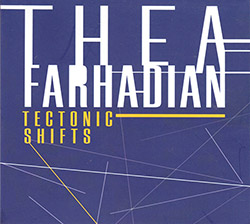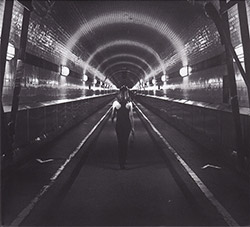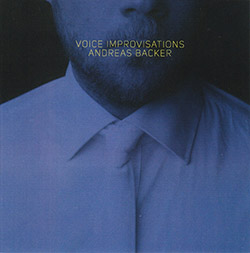![Perepelycia, Alexis: Esos Fantasmas <i>[Used Item]</i> (Creative Sources) Perepelycia, Alexis: Esos Fantasmas <i>[Used Item]</i> (Creative Sources)](https://www.teuthida.com/productImages/misc4/29950.jpg)
Argentinian sound artist Alexis Perepelycia explores his influences in an extended sonic work, drawing on his roots in the sounds of garage, punk, metal, industrial music into his work in academia, using abstract references of assertive and acousmatic sound with powerful electronic emphasis as he seeks his ghosts amidst references like Russolo, Stockhausen, &c.
In Stock
Quantity in Basket: None
Log In to use our Wish List
Shipping Weight: 2.00 units
Sample The Album:
Alexis Perepelycia-electronics
Click an artist name above to see in-stock items for that artist.
UPC: 5609063406719
Label: Creative Sources
Catalog ID: cs671
Squidco Product Code: 33644
Format: CD
Condition: VG
Released: 2020
Country: Portugal
Packaging: Cardboard Gatefold
Recorded at La Rana Estudios, in Rosario, Argentina, by the artist.
This is a USED (previously owned) item
"A manifesto on the new sounds: The drummer's album arises from a conceptual project that he experiments with sounds of punk and rock traits, from an industrial era of close echoes.
Entering Those Ghosts is to enter a landscape. Noises? This is quickly questionable when it comes to an atmosphere, a sentient universe. Esos Fantasmas is the new work by Alexis Perepelycia, winner of a grant from the National Institute of Music and distributed through the Portuguese label Creative Sources Recordings. It is also the second part of his Trilogy for a New Time.
"If we think about noise aesthetics, the definition of noise would almost dissolve, because we would try to define something with the same term. The noise would cease to be such, no longer interpreted as it is generally thought in the communicational sense, as a disruption. Here the content is in the noise. The disruptive element becomes the container of the information, the noise is building a sound musical discourse in this context. I believe that there the sound would be the universe where the noise is inscribed, as well as everything that does not make noise, in the conventional sense of the term, and all that we would be perceiving would be sound, as a physical phenomenon, as a disturbance in the elastic medium which is the air ", explains the musician to Rosario / 12 ..
His new album arises from a process of experimentation that has led him to revisit sounds from childhood and adolescence. On a journey of deconstruction that touched the DNA inscribed in musical information that drew on punk, garage, metal: "I think that as you grow older or grow older, you begin to deny your origins less. In the journey of training and search, one looks around in search of new horizons, perhaps trying to relegate things that marked or motivated you, those that made you walk. And suddenly you find yourself looking for the origins, the starting points. And in that trunk of memories you find a lot of questions that perhaps were put on hold for different reasons. As a kid I started playing rock, in garage bands, in an industrial neighborhood, towards the end of the 20th century. With all my friends and colleagues we were more or less in the same. Suddenly, when I began to study academically, to dedicate myself deeply to the discipline of music at the University, between career and postgraduate studies, all of that remained like a distant cone of shadow. But when you get into a project that touches you in a sensitive way, echoes start to appear, which led me to look for those materials. I have a very strong emotional charge with the sound of garage, punk, metal, industrial, because our old men were engineers who worked in factories. There is a very strong emotional connotation, a unity of a specific place. It is a moment of my life and of an aesthetic that I remember with great joy. Inevitably those ghosts presented themselves to me, with which I was able to establish a dialogue and find that all that I had been working on academically, looking for saturated sounds in relation to noise in the musical sense of the term, that of a non-tonic sound, made a definitive balance suddenly emerge full of potential and I began to inquire. At the same time I was a father, a very strong emotional thing, and I had the lonely moment of being with my children and of being able to recover those feelings ".
Alexis Perepelycia's musical journey is inscribed in an emotional and precise way. On a path that offers clear marks, of affiliations with which to dialogue. In this evolution, what is emerging is also the sound of a conglomerate that grows, bulges and mutates technologically. "There was a fundamental legacy on the part of Luigi Russolo, who with Marinetti in the Futurist Manifesto spoke of the new sounds that they perceived in industrialized cities. They realized that things had changed, imbued in an environment with other types of sounds. Over time, Russolo was building a series of devices that he called the Intonarumori, noise intoners, and composed works for orchestras with those devices. Undoubtedly, technologies allowed new approaches, But you also think of a violin and it is a technology that took centuries to be built. I have luthier friends who tell me all the time about how materials and techniques have changed. But going digital and what touches me closely, the so-called digital luthería, which is the composition of an instrument from software, about the late '40s and early' 50s, the German composer Karlheinz Stockhausen records sounds of Analog synthesizers on tape that he later cut with a set of cutters or guillotines to give them enveloping, dynamic shapes. He had studied with Olivier Messiaen, who also had the technique of working with tape, something that Pierre Schaeffer had developed at Radio France. Thus, Stockhausen begins to compose with synthesizers. The guy finds musical potential in those machines, and from there he has much more precise 'control' of frequency production. Hence my history and my study, which takes me to France in the late '60s, what was called the spectral movement of Tristan Murail and Gérard Grisey, who used computers to analyze the physical and acoustic spectrum of a specific sound, of a punctual note of an instrument. Then they wrote in sheet music for an ensemble of instruments to recompose a spectrum of a single sound, of a single note of a single instrument. All that timbre, analyzed in the spectrograph, in the computer, they could understand it graphically, visually, and then download it to paper. Without technology it would have been almost impossible. I think György Ligeti had been doing something similar, but he was doing it by ear ". and from there you have a much more precise 'control' of frequency production. Hence my history and my study, which takes me to France in the late '60s, what was called the spectral movement of Tristan Murail and Gérard Grisey, who used computers to analyze the physical and acoustic spectrum of a specific sound, of a punctual note of an instrument. Then they wrote in sheet music for an ensemble of instruments to recompose a spectrum of a single sound, of a single note of a single instrument. All that timbre, analyzed in the spectrograph, in the computer, they could understand it graphically, visually, and then download it to paper. Without technology it would have been almost impossible. I think György Ligeti had been doing something similar, but he was doing it by ear ". and from there you have a much more precise 'control' of frequency production. Hence my history and my study, which takes me to France in the late '60s, what was called the spectral movement of Tristan Murail and Gérard Grisey, who used computers to analyze the physical and acoustic spectrum of a specific sound, of a punctual note of an instrument. Then they wrote in sheet music for an ensemble of instruments to recompose a spectrum of a single sound, of a single note of a single instrument. All that timbre, analyzed in the spectrograph, in the computer, they could understand it graphically, visually, and then download it to paper. Without technology it would have been almost impossible. I think György Ligeti had been doing something similar, but he was doing it by ear ".
From the exposed route, the musician clarifies that it is "a baggage, a piece of information, but the aesthetics to which I am trying to refer is another, it is an archaeological search, perhaps unconscious, where the expressive goes through searching for what was questioning me. On one occasion, as a teenager, they let me go to my old man's factory. It was a universe to discover. Later I understood how noisy and unhealthy I was passing through, the steam, the soot, the unbearable temperature. The factory for me is an echo, a reflection of the city. Industrialization is something you see on the street, on a day-to-day basis. There is also something of the sociological order in terms of the organization of discourse, of language, which tends more to chaos. And it refers to another noisy school that is the Japanese, a great school that for me arises after Hiroshima,
The ghosts that Alexis Perepelycia haunts could well be perceived as environments, near and far atmospheres. Also everyday: "We conglomerate, we are a gregarious species, we group together but to the point of becoming saturated in collapsed cities. It seems to me that this is also reflected in the artistic proposals "."-Leandro Arteaga, Pagina 12
Get additional information at Pagina 12
Artist Biographies
• Show Bio for Alexis Perepelycia "Alexis Perepelycia: Composer, Musician, Multimedia Artist, Researcher, Teacher His works have been premiered at exhibitions and festivals in Argentina, France, Italy, Germany, Austria, England, the United States, Portugal, Canada, Spain, Brazil, Mexico, Chile, Northern Ireland and China. He obtained awards and mentions at XII Festival Florianópolis Audiovisual Mercosur 2008 (BR), Just Plain Folks Music Awards 2009 (USA) and Latin American Film Festival Rosario 2016 (AR). His work has been published by VoxNovus (USA), Gebrüder Stark Musikverlag (ALE), New Adventures in Sonic Arts (CAN), StigmArt (IT), mediaartbase (ALE), Dreamland Recordings (AUS), Earphone (USA), Asociación de Acústica de Uruguay (UY), Rara Avis (AR), La Rana Producciones (AR), 0 POSITIVX (AR), Sudamérica Electrónica (AR), Homeless - Low Fi (CHL), Nendo Dango Recordings (AR), Creative Sources ( PT). He carried out artistic residencies at ZKM (ALE), MSH (FR), SARC (UK), LIPM (AR), LODO Platform (AR), Body Without Organ Cultural Association (ES), MATSU Estudio (ES). He collaborated with Albert Cirera (ES), Christian Müller (SUI), Andrew Drury (USA), Pedro Souza Bittencourt (BR / PT), Mauro Bagella (IT), Hans Koch (SUI), Thomas Beat Peter (SUI), Emmebifactory (IT), Ensemble Densités (FR), Computer Arts Festival (IT), Electroacoustic Music Days (PT), Musica Scienza (IT), Christoph Erb (SUI), Frantz Loriot (FR / SUI), Lionel Friedli (SUI) , Vincent Membrez (SUI), César Bernal (CHL), among others. He obtained scholarships and grants from Stockhausen Foundation (ALE), Archivio Luigi Nono (IT), Pompeu Fabra University (ES), Department of Employement and Learning (UK), National Endowment for the Arts (AR), National Theater Institute (AR) , Ministry of Innovation and Culture of the Province of Santa Fe (AR), Ministry of Culture of the Province of Chaco (AR), CCPE / AECID (AR / ES), National Institute of Music (AR). He has received commissions and commissions from the Brazilian-Portuguese saxophonist Pedro Bittencourt, the Zentrum für Kunst und Medientechnologie (ALE), Young at Arts Festival (UK), the Argentine Library Dr. Juan Álvarez (AR), the Live Musical Arts department of the Municipality of Rosario (AR), among others. He is Director of Humedal: International Festival of Free Improvisation and Sound Arts of Rosario and co-director of the free improvisation concert series all free! . He is a member of the Federation of Electroacoustic Music of Argentina (FARME), the Latin American Sound Art Network, El Qubil (association of independent musicians of Rosario) and a founding member of the Center for Studies in Music and Technology of the National University of Rosario. He studied at UNR, Argentina; Queen's University Belfast, UK; Université Paris 8, France. He works as an independent composer, and as a teacher at the School of Music, Faculty of Humanities and Arts, National University of Rosario." ^ Hide Bio for Alexis Perepelycia
9/13/2023
Have a better biography or biography source? Please Contact Us so that we can update this biography.
Track Listing:
1. Eros Fantasmas 37:30
Used CDs
Creative Sources
Electro-Acoustic
Electroacoustic Composition
Solo Artist Recordings
South & Central American + Caribbean Improvisation
Used CD Alphabetic List
Search for other titles on the label:
Creative Sources.


![Perepelycia, Alexis: Esos Fantasmas <i>[Used Item]</i> (Creative Sources) Perepelycia, Alexis: Esos Fantasmas <i>[Used Item]</i> (Creative Sources)](https://www.teuthida.com/productImages/full/33644.Full.jpg)
